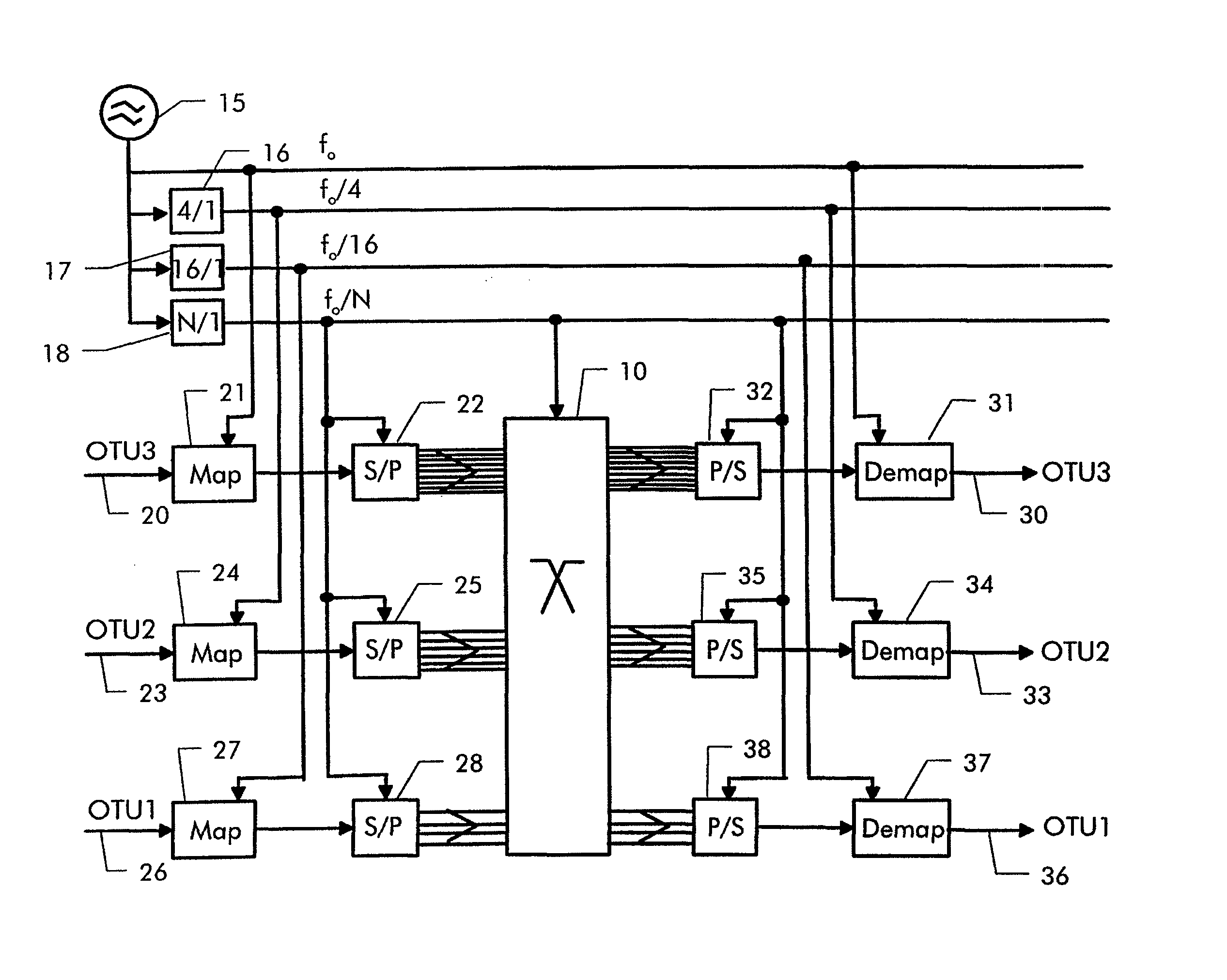Network element for signals of the optical transport network (OTN)
a network element and optical communication technology, applied in the field of network element for asynchronous optical communication signals, can solve the problems of limited capacity and reliability, inability to meet the needs of users, and inability to meet the needs of users, and achieve the effect of increasing bit ra
- Summary
- Abstract
- Description
- Claims
- Application Information
AI Technical Summary
Benefits of technology
Problems solved by technology
Method used
Image
Examples
Embodiment Construction
[0012]A basic idea of the invention is to synchronize the received asynchronous communications signals to an internal frame format having a slightly higher internal clock rate by stuffing. The signals thus synchronized are parallelized and switched with a standard switching matrix comprising synchronously operating integrated circuits that operate at the internal clock rate.
[0013]An optical crossconnect operating according to this principle is shown diagrammatically in the FIGURE. The received optical communications signals are converted (not shown) by O / E converters into electrical signals 20, 23, 26 and fed to a stuffing device 21, 24, 27 herein referred to as mappers. The mappers are each connected to serial / parallel converters 22, 25, 28. The serial / parallel converters are connected via parallel connections to a synchronously operating electrical switching matrix 10. At the output, the switching matrix 10 is followed again by parallel / serial converters 32, 35, 38 that are each c...
PUM
 Login to View More
Login to View More Abstract
Description
Claims
Application Information
 Login to View More
Login to View More - R&D
- Intellectual Property
- Life Sciences
- Materials
- Tech Scout
- Unparalleled Data Quality
- Higher Quality Content
- 60% Fewer Hallucinations
Browse by: Latest US Patents, China's latest patents, Technical Efficacy Thesaurus, Application Domain, Technology Topic, Popular Technical Reports.
© 2025 PatSnap. All rights reserved.Legal|Privacy policy|Modern Slavery Act Transparency Statement|Sitemap|About US| Contact US: help@patsnap.com


